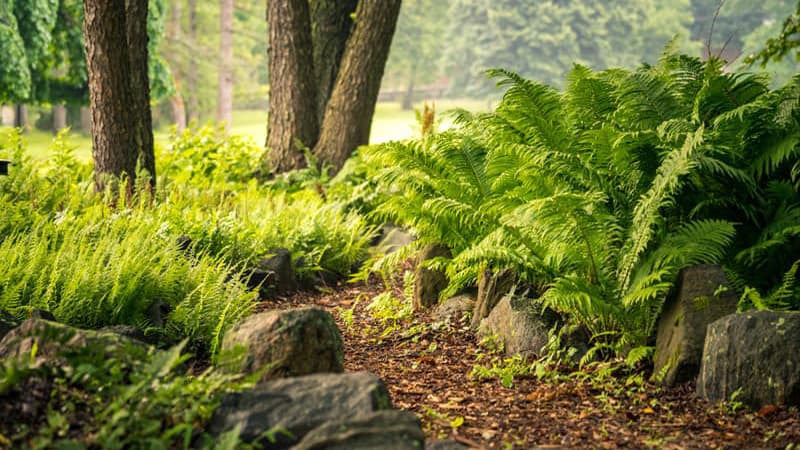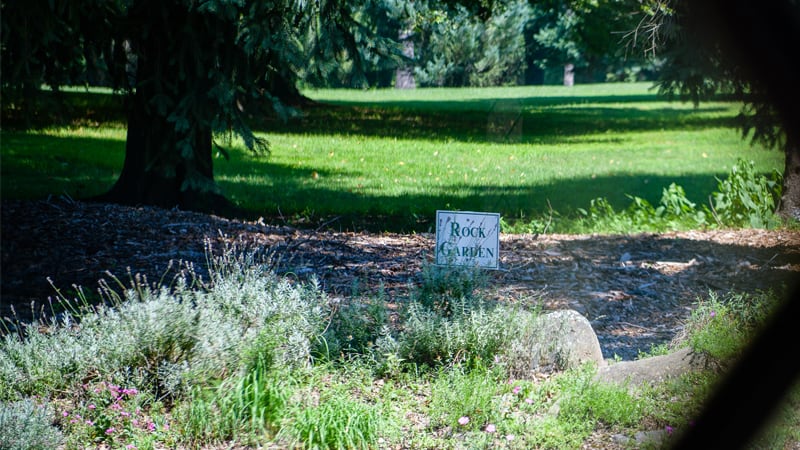Lyndhurst’s Upper Landscape
The portion of the property surrounding the entry drive and concluding at the mansion is Lyndhurst’s upper landscape. The entry drive was designed to ‘reveal’ the mansion to visitors as they travelled past selectively planted gardens and groves of specimen trees. We have begun to reintroduce the missing specimen trees and bushes that lined the drive and offered select picturesque views of buildings on the property. This will make the entry into Lyndhurst even more lush than it currently is and complete groups of plantings that have been partially lost.
Adjacent to the greenhouse on the east side of the structure were multiple flowering and specimen trees, as well a pear orchard. A substantial lilac hedge still separates that part of the landscape from the historic pool building at the north-eastern corner of the property. Cement sidewalks around the greenhouse and garden furniture were original to the front of the greenhouse will be restored or replaced.
The centerpiece of the upper landscape is the Lyndhurst greenhouse, which was commissioned by Lyndhurst’s third owner, Jay Gould, after the original greenhouse was lost to a fire in 1880. The greenhouse is most noted for its orchid specimens and the night blooming cereus, but also serviced the mansion with cut flowers and cultivated a variety of palms which were placed throughout the property, including in the swimming pool building. A 1942 color film discovered in storage in 2018 reveals the colorful perennial beds that distinguished the front of the greenhouse lawn. Except for the greenhouse perennial beds and the enclosed rose garden, Lyndhurst is almost exclusively landscaped with trees, shrubs, understory plantings and lawns.
Today, Lyndhurst is at the center of a 150-acre “Historic Commons” parkland that is bisected by two major long-distance walking trails, the Old Croton Aqueduct State Park and the Westchester Riverwalk. Lyndhurst is the only place where the aqueduct crosses a private property to such an extent.


